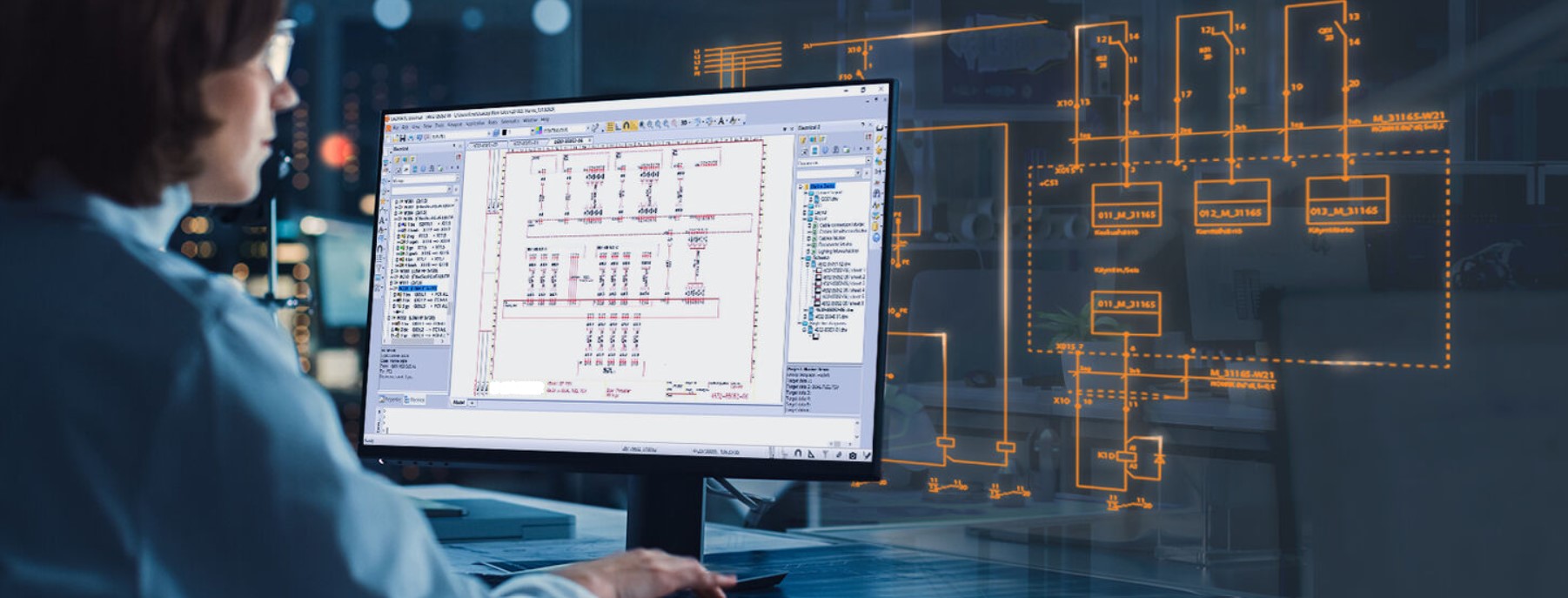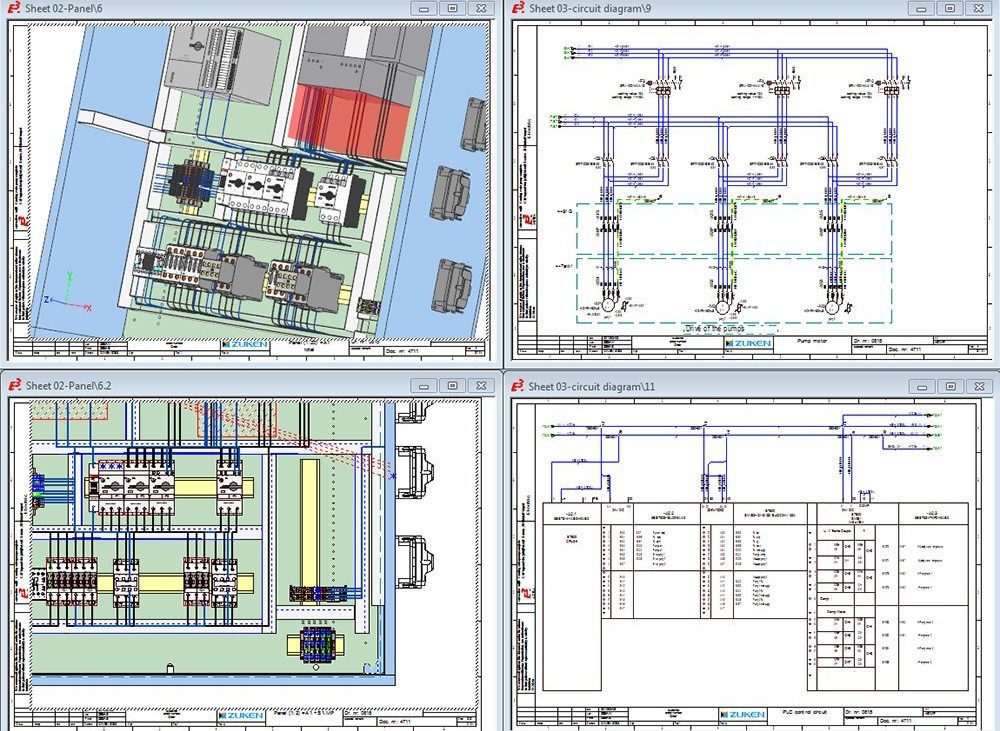Cutting-edge Electric Design Providers for Modern Infrastructure
The development of modern-day infrastructure requires ingenious electric design services that not only boost operational performance but also address sustainability obstacles. As metropolitan environments grow significantly intricate, including innovations such as smart grids and sustainable energy sources comes to be paramount. These improvements not just assure to optimize power consumption yet also foster resilience against future needs. Nevertheless, the landscape of electric design is undertaking fast improvement, prompting a better exam of arising patterns and their implications for long-lasting infrastructure feasibility. What might the future hold for those that welcome these ingenious methods?
Relevance of Cutting-edge Electric Design
Cutting-edge electrical design plays a vital function in contemporary infrastructure, influencing not only performance but also sustainability. As cities develop and the demand for energy increases, the need for sophisticated electric systems comes to be extremely important. These systems should not just satisfy existing needs yet also expect future development and technical improvements.
A well-executed electrical design can dramatically lower energy intake, therefore reducing operational prices and decreasing ecological influence. By including renewable resource resources, such as solar panels and wind turbines, ingenious designs can boost power independence and durability. Smart grid modern technologies allow for real-time surveillance and administration of power distribution, enhancing efficiency and minimizing waste.
Safety is another critical facet of electrical design. Applying strenuous requirements and sophisticated modern technologies can reduce risks connected with electrical failures, guaranteeing a safe setting for companies and homeowners alike. Furthermore, ingenious styles promote adaptability, enabling facilities to integrate emerging modern technologies flawlessly.
Key Patterns in Electric Design
As the landscape of electrical design proceeds to advance, several essential patterns are forming the future of the industry. One considerable pattern is the assimilation of clever technology into electrical systems. The proliferation of the Web of Points (IoT) has actually enabled real-time surveillance and control of electric devices, improving effectiveness and assisting in predictive maintenance.
An additional trend is the growing focus on modular design. This approach allows for flexible and scalable solutions, enabling infrastructure to adjust to altering requirements without substantial remodellings. In addition, the usage of innovative simulation devices and Building Information Modeling (BIM) is coming to be progressively common, enhancing the design procedure and enhancing cooperation among stakeholders.
Furthermore, developments in materials scientific research are causing the advancement of lighter, more resilient, and energy-efficient parts. This innovation is specifically important for high-performance structures and facilities tasks.
Lastly, there is a marked shift in the direction of data-driven decision-making - electrical load calculation. Leveraging information analytics aids developers maximize systems for performance and cost-effectiveness. Together, these fads symbolize a transformative age in electric design, improving performance, sustainability, and resilience in modern-day facilities
Lasting Energy Solutions
Sustainable energy remedies are significantly becoming an important emphasis in electrical design, showing a more comprehensive commitment to ecological obligation and resource performance. These options aim to minimize ecological impact while maximizing energy consumption in numerous facilities, from residential buildings to large commercial centers.
Among the foremost approaches entails the assimilation of renewable resource resources, such as photovoltaic panels and wind turbines, into electrical systems. This not only minimizes dependency on fossil gas yet also improves energy strength. Furthermore, ingenious power storage space systems, such as innovative batteries, allow efficient management and circulation of power, guaranteeing that excess power created throughout peak production can be used throughout high demand periods.
In addition, click to find out more energy-efficient design methods are being embraced to improve total system efficiency. This consists of making use of energy-efficient lights, HVAC systems, and wise building modern technologies that monitor and adjust energy use based upon occupancy and environmental problems.
Smart Grid Technologies
The application of sustainable power remedies normally causes the exploration of smart grid technologies, which play an essential role in improving electrical systems. Smart grids take advantage of progressed interaction modern technologies and data analytics to improve the integrity, effectiveness, and sustainability of electrical energy distribution. By incorporating electronic innovation with typical grid framework, these systems help with real-time monitoring, automated control, and enhanced decision-making abilities.
One of the key functions of smart grids is their capability to accommodate renewable resource sources, such as solar and wind power. This flexibility not only minimizes dependency on nonrenewable fuel sources but also permits a much more decentralized energy production version. Moreover, smart grids enable demand feedback programs, where consumers can change their energy use based upon real-time pricing, consequently promoting power preservation and decreasing peak load needs.
In addition, smart grid innovations enhance grid resilience by making it possible for quicker identification and resolution of failures, eventually decreasing downtime. With anticipating upkeep and analytics, energies can maximize procedures and enhance service shipment. As areas and cities proceed to develop, smart grid innovations are vital for building a effective and lasting electric framework that fulfills the demands of contemporary society.

Future-Proofing Facilities
To make certain long-lasting stability and flexibility, future-proofing framework is necessary in the swiftly evolving landscape of electrical design solutions. As innovation developments and energy needs change, it is essential that electrical systems are developed with versatility in mind. This entails including scalable options that can fit future upgrades without requiring substantial overhauls.

Additionally, sustainability needs to be a keystone of future-proofed layouts. Visit This Link Using eco-friendly energy resources, such as solar and wind, and maximizing energy efficiency minimize reliance on fossil fuels, straightening with worldwide initiatives to fight climate modification.
Conclusion
Finally, innovative electric design services play a pivotal duty in shaping contemporary framework. By prioritizing sustainability, versatility, and efficiency, these solutions deal with the advancing demands of energy systems. The integration of smart grid modern technologies and sustainable energy options enhances durability and lowers operational costs. Future-proofing framework via advanced simulation devices and modular methods makes sure that electric systems continue to be receptive to altering requirements, inevitably adding to a much more lasting and energy-independent future.
A well-executed electric design can substantially reduce energy intake, therefore decreasing operational costs and minimizing ecological effect. By incorporating renewable power resources, such as solar panels and wind turbines, cutting-edge layouts can improve energy self-reliance and durability. Furthermore, innovative power storage systems, such as sophisticated batteries, allow efficient monitoring and circulation of power, guaranteeing that surplus power created during optimal manufacturing can be utilized during high need durations.
Smart grids make it possible for demand feedback programs, where consumers can readjust their energy usage based on real-time pricing, thereby advertising power preservation and minimizing peak load needs. (electrical load calculation)
As technology breakthroughs and energy needs change, it is vital that electrical systems are created with versatility in mind.